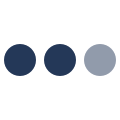Czego będziesz potrzebować
Wideokonferencja z udostępnianiem i nagrywaniem ekranu
Kwestionariusz
Miejsce spotkania
Urządzenie do nagrywania lub notatnik i długopis
Kwestionariusz
Instrukcje dotyczące gry
Większość gier nie wymaga intensywnych przygotowań (lub wręcz nie wymaga żadnych). Jednak wywiady z klientami są inne. Potraktuj poważnie prace przygotowawcze. Dzięki temu wyciągniesz z rozmowy znacznie więcej, podobnie zresztą jak Twoi klienci.
1. Przygotowanie 90 min
INFORMACJE OGÓLNE ALBO SZCZEGÓŁOWA ANALIZA
Chcesz poznać ogólne wzorce użytkowania i dać klientowi szansę na przekazanie ogólnych informacji zwrotnych? Jeśli tak, zaplanuj wywiad otwarty i płyń z prądem. Szerszy zakres rozmowy może przynieść zaskakujące spostrzeżenia na temat tego, jak produkt lub usługa jest postrzegana i używana przez klientów.
Alternatywnie, jeśli szukasz konkretnych informacji, możesz zawęzić tematykę wywiadu i zagłębić się w określone zagadnienie. Możesz wykorzystać pogłębiony wywiad, aby zweryfikować założenia na temat funkcji, przeanalizować niuanse częstych wniosków o nowe funkcje lub skupić się na problemach zgłaszanych przez klientów.
Powołanie zespołu przeprowadzającego rozmowy
Każdy może uczestniczyć w wywiadzie z klientem, jednak rozmowę prowadzi zazwyczaj product owner, kierownik usługi lub członek zespołu pierwszej linii (np. programista, projektant lub operator usługi). Dobrze również mieć przy sobie drugą osobę ze swojego zespołu, która będzie robiła notatki i ogólnie pełniła funkcję „drugiego pilota”. Nie próbuj jednocześnie wcielać się w rolę prowadzącego i protokolanta — będziesz się rozpraszać i nie będziesz w stanie aktywnie słuchać.
Dobrym pomysłem jest także wprowadzenie cichego obserwatora. Zadaniem takiej osoby jest przysłuchiwanie się rozmowie i wychwytywanie tematów lub powiązań, gdy prowadzący i protokolant są zbyt zajęci. Obserwator może zadbać o to, aby nie przeoczyć niczego ważnego.
ZNALEZIENIE NAJLEPSZEGO KLIENTA DO PRZEPROWADZENIA ROZMOWY
Poświęć nieco czasu na wybór idealnych klientów do rozmowy. Nie może to być ktokolwiek — upewnij się, że wybrana przez Ciebie osoba rzeczywiście potrafi wypowiedzieć się na temat, o którym chcesz dowiedzieć się więcej.
Zastanów się nad celami wywiadu i zapraszaj do udziału klientów, którzy pomogą Ci je zrealizować. Staraj się zaangażować zbilansowaną grupę klientów: fanów, hejterów, osoby, które były bliskie dokonania zakupu, ale zrezygnowały, osoby, które zastąpiły produkt konkurencji Twoim (lub odwrotnie) itp.
Przed nawiązaniem kontaktu z każdym potencjalnym rozmówcą postaraj się poznać go możliwie jak najlepiej. Zanotuj kilka szczegółów, do których będzie można sięgnąć: z jakiego produktu lub usługi korzysta, jak długo jest Twoim klientem, jak duży jest zespół lub jakiej wielkości jest firma (zależnie od sytuacji), jakie były dotychczasowe opinie tego klienta itp.
Po wyznaczeniu klientów do przeprowadzenia wywiadu postaraj się ich pozyskać, wysyłając interesujące zaproszenie, w którym wyjaśnisz cele takiej rozmowy, określisz czas jej trwania i proponowany termin. Jeśli klient znajduje się w Twojej okolicy, zaproponuj przeprowadzenie rozmowy w biurze klienta — tak będzie najłatwiej, a Ty zyskasz szerszy kontekst, mogąc przebywać w naturalnym środowisku klienta. Jeśli nie jesteś w stanie udać się do klienta, zaproś go do swojego biura i potraktuj jak VIP-a.
Jeśli nie masz możliwości przeprowadzenia sesji osobiście, możesz przeprowadzić rozmowę wideo lub telefoniczną. W ostateczności możesz skorzystać z e-maila lub formularza, ale nie jest to najlepsze wyjście. W przypadku takiej asynchronicznej formy wywiadu można łatwo zgubić subtelny kontekst i spontaniczne spostrzeżenia. Zrób więc wszystko, co w Twojej mocy, aby spotkać się z klientem osobiście i móc zbudować relację.
Przygotowanie scenariusza rozmowy
Nie przeprowadzasz ogólnej ankiety satysfakcji klienta, więc nie próbuj improwizować podczas rozmowy — potrzebujesz skryptu, nawet jeśli posłuży tylko jako wskazówka. Najpierw w drodze burzy mózgów wyłoń co najmniej 20 potencjalnych pytań. Następnie ogranicz tę liczbę do maksymalnie 10 (zakładając, że masz godzinę na rozmowę z klientem). Zacznij od wyeliminowania pytań zamkniętych, na które klient najprawdopodobniej odpowie „tak” lub „nie”.
Twoje pytania powinny koncentrować się na bieżącym zachowaniu, ponieważ jest ono dobrym wyznacznikiem przyszłych zachowań. Uważaj na efekt potwierdzenia i staraj się nie sugerować rozmówcy odpowiedzi. Sformułuj pytania w taki sposób, aby skłaniały klienta do precyzyjnego wyrażania poglądów. Na początku rozmowy uwzględnij pytania wprowadzające i postaraj się nawiązać relację z klientem. Zapytaj, jak długo zajmuje swoje stanowisko, jak często korzysta z produktu lub usługi bądź gdzie się o nich dowiedział.
Jeśli ważne jest zachowanie poufności treści rozmowy z klientem, możesz przygotować umowę o zachowaniu poufności (NDA).
Przygotowanie się do dnia rozmowy
W końcu nadszedł czas, aby przeprowadzić rozmowę z klientem. Masz wydrukowane kwestionariusze z pytaniami i opis klienta dla każdego. Urządzenie do nagrywania jest naładowane i masz zebrany pakiet gadżetów dla uczestników: koszulki, kubki, naklejki. Pokój, w którym będziecie rozmawiać (jeśli rozmowy będą odbywały się w Twoim biurze) jest posprzątany i panuje w nim odprężająca atmosfera.
Upewnij się, że członkowie Twojego zespołu uczestniczący w rozmowach znają swoje role, abyście mogli działać jak dobrze naoliwiona maszyna. Protokolanci powinni unikać prowadzenia rozmowy, a obserwatorzy zadawać pytania dopiero na końcu.
Potraktuj poniższe pytania do rozmowy jako sugestie. Dostosuj je do swoich potrzeb oraz stylu.
NA PRZYKŁAD…
Oto kilka szablonów e-maili, których używamy do werbowania klientów na wywiad.
Porada eksperta:
Protokolanci mogą skonfigurować stronę Confluence do zapisywania notatek. Skorzystaj z porad na temat tworzenia strony do przeprowadzania wywiadu z klientem dostępnych na blogu Atlassian.
2. Sprawy organizacyjne 5 MIN
Powitaj klienta i podziękuj mu za przybycie (tak, to również wydaje się oczywiste, ale łatwo o tym zapomnieć).
Poproś o zgodę na nagrywanie rozmowy, abyście mogli odtworzyć każde słowo, jeśli protokolant będzie miał małe opóźnienie. Zapewnij klienta, że nagranie, jak i cała rozmowa, będą wykorzystane wyłącznie w celach wewnętrznych. Udostępnisz fragmenty rozmowy swojemu zespołowi, ale poza tym będą całkowicie poufne, tj. nie będziesz z nich na przykład czerpać cytatów do celów reklamowych.
3. Pytania wstępne 10 MIN
Zacznij od pytań wstępnych przygotowanych w scenariuszu rozmowy. Ten etap ma po części na celu nawiązanie relacji. Zwracaj uwagę na takie wskazówki, jak język ciała czy ton wypowiedzi. Czy klient czuje się swobodnie? Czy jego odpowiedzi są wyczerpujące?
4. Ważne pytania 20 MIN
Przejdź do pytań ze scenariusza rozmowy, aby uzyskać konkretne informacje, na których Ci zależy. Pamiętaj, że nie musisz się go trzymać ściśle — stanowi jedynie wskazówkę. Przykładowo, jeśli odkryjesz potencjalnie nieplanowane istotne zagadnienie, możesz zadawać pytania uzupełniające.
Nie krępuj się poświęcić więcej czasu na luźną rozmowę z klientem o tym, czego próbujesz się od niego dowiedzieć. Nie ma nic złego w popłynięciu z prądem, o ile gromadzisz cenne informacje, które Twój zespół może wykorzystać. Już samo zapoznanie się z bolączkami klienta może być pomocne. Pytania będą wyznaczać pewien konspekt i możesz z nich skorzystać, gdy rozmowa nagle utknie.
W trakcie rozmowy weryfikuj odpowiedzi. Staraj się parafrazować wypowiedzi klienta lub formułować pytania w inny sposób, aby sprawdzić, czy protokolant właściwie zapisuje opinie klienta.
Wskazówka eksperta:
Poproś klienta o zaprezentowanie, jak korzysta z produktu lub jakie problemy miewa w codziennej pracy. Wykonaj zrzuty ekranu lub nagraj film, aby móc sięgnąć do nich później i udostępnić je zespołowi.
5. Pytania obserwatora 10 MIN
Jeśli w pomieszczeniu są obserwatorzy, którzy mają pytania, to dobry moment, aby je zadali.
Pytania obserwatorów powinny skłaniać do głębszych przemyśleń i refleksji. „Czy to ważna funkcja?” jest przykładem niewłaściwego pytania. Dobre pytanie będzie brzmiało: „Dlaczego ta funkcja jest przydatna?”. Jeszcze lepiej zapytać: „Co by się stało, gdyby ta funkcja zniknęła?”. W ten sposób wyraźnie zilustruje się wartość danej funkcji lub uzmysłowi klientowi, że być może funkcja nie jest nawet tak krytyczna, jak mu się wydawało.
6. Odwrócenie ról 10 MIN
Z wywiadów z klientami wyciągniemy więcej, jeśli nadamy im charakter dwustronnej konwersacji. Zanim zamkniesz sesję, daj klientowi możliwość zadania Ci pytań. Możesz być zaskoczony tym, czego się dowiesz.
7. Podsumowanie 10 MIN
Podziękuj klientowi za poświęcenie czasu (tego nigdy za wiele) i nie zapomnij o przekazaniu gadżetów!
Jeśli chcesz podjąć dalsze kroki, omów je i zaplanuj teraz.
Na przykład…
Wykorzystaj analizę „5 × dlaczego” do zinterpretowania problemów. Wynik powinien być mniej więcej taki, jak tutaj.
8. Podsumowanie wniosków z rozmowy 30 min
Gdy już się rozejdziecie, zbierz swój zespół na szybką naradę. Zapytaj, co inni sądzą o opiniach klienta. Czy były wartościowe? Zaskakujące? A może sprzeczne?
Nie podsumowuj wywiadu od razu. Daj sobie czas na przetrawienie omówionych problemów i przypadków użycia.
Aby móc maksymalnie wykorzystać potencjał wywiadów z klientami, nie ograniczaj się do przekazania ich komentarzy i swoich obserwacji reszcie zespołu. Wykorzystaj zasłyszane i zaobserwowane zagadnienia do zinterpretowania problemów. Dociekaj przyczyn. Zamiast przechodzić prosto do rozwiązania (co często starają się robić klienci w trakcie rozmowy), przemyśl zachowania i ich przyczyny.
Następnie powiąż te problemy z możliwościami. Poszukaj wzorców wyłaniających się z wielu rozmów. Przyjrzyj się temu, co klienci piszą w zgłoszeniach do działu wsparcia, na forach użytkowników, a nawet w mediach społecznościowych. Zbierz materiał dowodowy i załóż sprawę w celu rozwiązania problemów, które zostały ujawnione podczas wywiadu.
Przetwórz te wszystkie informacje w głowie. Dopiero wówczas przystąp do podsumowania.
Więcej informacji znajdziesz w naszym artykule na temat „piramidy rozmowy z klientem”.
Zawsze aktualne informacje
Po zapisaniu się do naszego newslettera będziesz otrzymywać aktualne porady dotyczące gier i życia zawodowego.




